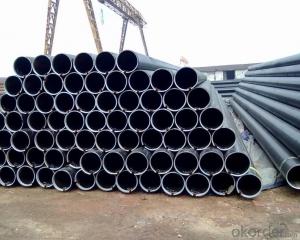Reinforcement bars, often referred to as rebars, are the backbone of any reinforced concrete structure. They provide the tensile strength that concrete lacks, ensuring the structure’s stability and longevity. Among the various types of rebars, 4 rebar is a popular choice for many construction projects. But what exactly is the diameter of a 4 rebar, and why is it important? Let’s dive into the world of rebar dimensions and find out.
The Significance of Rebar Diameter
The diameter of a rebar is crucial for several reasons. It affects the rebar’s weight, strength, and how it interacts with the concrete. A larger diameter means more surface area in contact with the concrete, leading to better bonding and load distribution. However, it also means a heavier rebar, which can impact the design and cost of the project.
Understanding the 4 Rebar
The term ‘4’ refers to the size of the rebar, which is standardized across the construction industry. In the United States, a 4 rebar has a nominal diameter of 1 inch (25.4 mm). But what does ‘nominal’ mean? It’s a term used to describe the approximate size, as the actual diameter can vary slightly due to manufacturing tolerances.
Manufacturing Tolerances and Actual Sizes
While the nominal diameter is 1 inch, the actual diameter of a 4 rebar can be slightly larger. This is due to manufacturing tolerances, which allow for a small variation to ensure the rebar meets industry standards. The American Society for Testing and Materials (ASTM) specifies that the minimum diameter for a 4 rebar should be 0.923 inches (23.4 mm), with a maximum diameter of 1.108 inches (28.2 mm).
Weight of 4 Rebar
The weight of a rebar is directly related to its diameter and length. For a 4 rebar, the weight per foot can vary depending on the actual diameter. Using the nominal diameter, the weight is approximately 0.576 pounds per foot (0.9 kg/m). However, if the rebar has a diameter at the higher end of the tolerance range, the weight will be slightly more.
Applications of 4 Rebar
4 rebar is versatile and finds its place in various applications. It’s commonly used in residential and commercial construction for:
– Foundation walls
– Beams
– Columns
– Slabs
– Footings
– Retaining walls
– And more!
The choice of rebar size depends on the structural requirements and the specific needs of the project. A 4 rebar is often used for medium-sized projects where a balance between strength and cost is desired.
Benefits of Using 4 Rebar
Using a 4 rebar comes with several benefits:
– Balanced Strength and Weight: It offers a good balance between strength and weight, making it suitable for a wide range of applications.
– Cost-Effective: It is a cost-effective option for many construction projects, providing the necessary strength without breaking the bank.
– Ease of Handling: The size is manageable, making it easier for workers to handle and install compared to larger rebars.
– Compatibility with Concrete: The diameter allows for a good bond with the concrete, ensuring the rebar does its job effectively.
Installation Considerations
When installing 4 rebar, there are a few considerations to keep in mind:
– Spacing: Ensure proper spacing between rebars to allow for concrete flow and to prevent overcrowding.
– Embedment: The rebar should be adequately embedded in the concrete to develop its full strength.
– Protection: Corrosion protection measures should be taken, especially in environments where the rebar may be exposed to moisture or chemicals.
– Cutting and Bending: 4 rebar can be cut and bent to fit the project’s specific needs, but care should be taken to avoid damaging the rebar during these processes.
The Role of 4 Rebar in Structural Integrity
The structural integrity of a concrete structure relies heavily on the rebar within it. A 4 rebar plays a critical role in:
– Tension Resistance: It resists the tensile forces that the concrete cannot handle on its own.
– Load Distribution: It helps distribute the load evenly across the structure, preventing stress concentration and potential failure points.
– Durability: By reinforcing the concrete, it increases the overall durability and lifespan of the structure.
The Future of Rebar Technology
As technology advances, so does the rebar industry. Innovations in rebar manufacturing and design are continually being developed to improve the performance and efficiency of rebar in construction projects. This includes the development of:
– High-Strength Rebars: Rebars with higher yield strengths for more demanding applications.
– Corrosion-Resistant Rebars: Rebars that are more resistant to corrosion, extending their service life.
– Shaped Rebars: Rebars with specific shapes designed to optimize their interaction with concrete.
Conclusion
Understanding the diameter of a 4 rebar and its implications is essential for anyone involved in construction. Whether you’re an architect, engineer, or contractor, knowing the specifics of rebar dimensions can help you make informed decisions about your project’s design and materials. Remember, the right rebar size can mean the difference between a successful structure and one that falls short of expectations.

